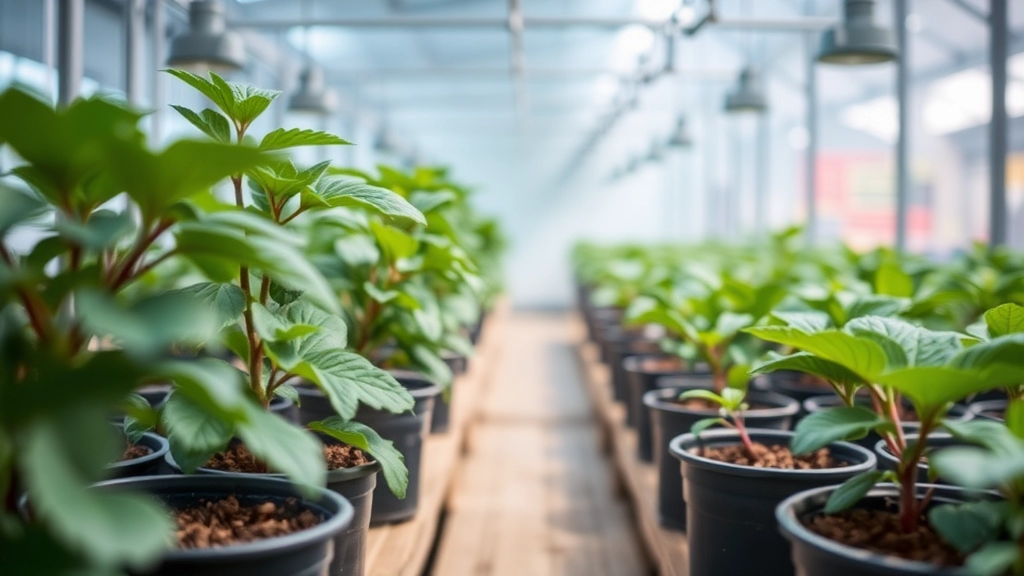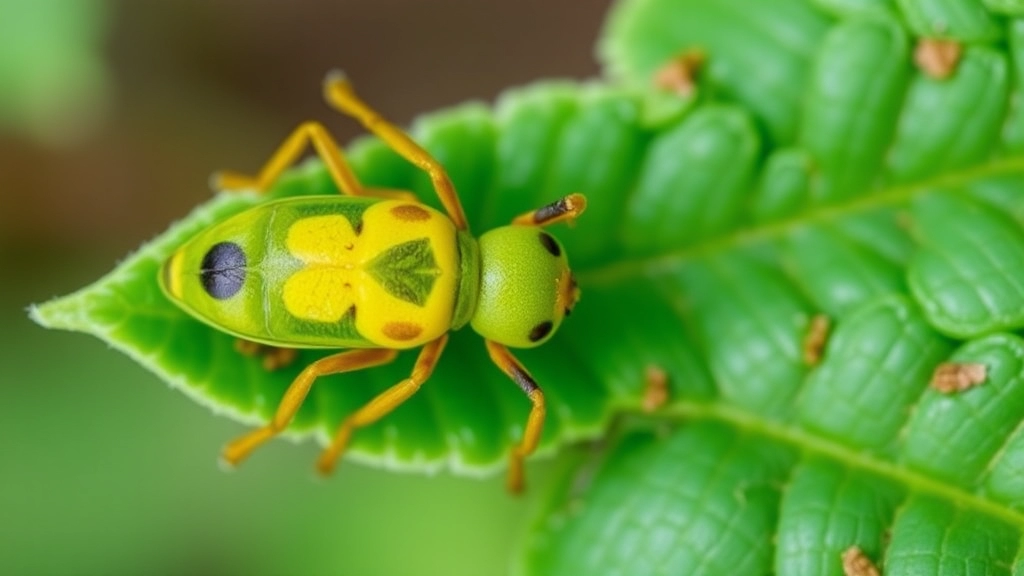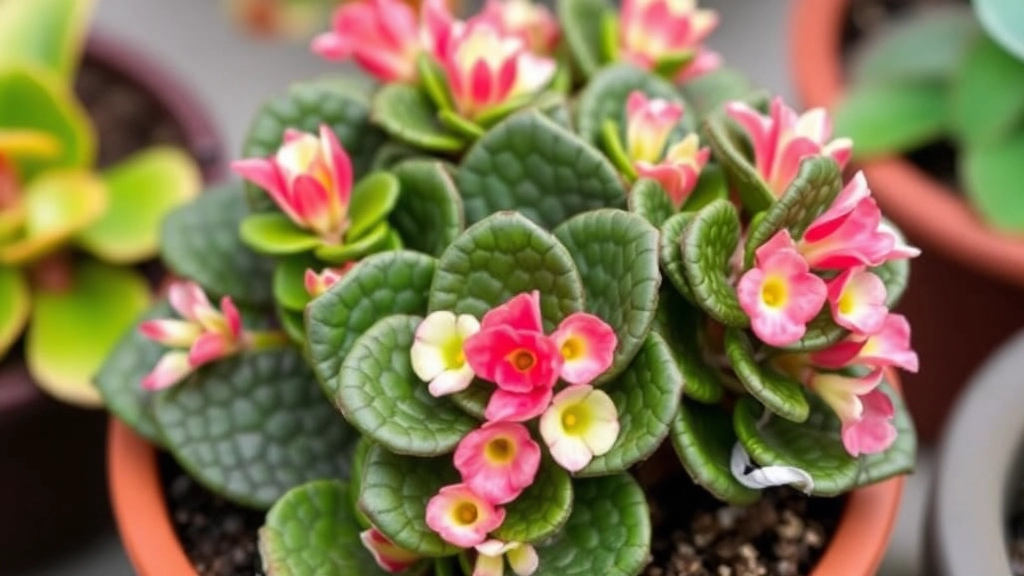Mastering Kalanchoe Panda Plant Care
Looking to master Kalanchoe Panda Plant care? You’ve come to the right place. In this guide, we’ll dive into ideal lighting conditions, the best soil types, and crucial watering guidelines to prevent root rot. Whether you’re a newbie or a seasoned plant parent, these tips will help your Panda Plant thrive.
We’ll also cover temperature and humidity needs, propagation methods, and how to tackle common pests and diseases. Plus, you’ll get a handy fertilizing schedule and repotting tips to keep your Panda Plant in top shape. Let’s get started on creating the perfect environment for your Kalanchoe Panda Plant!
Ideal Lighting Conditions for Panda Plants
When caring for your panda plants, have you ever wondered about the best lighting conditions to promote healthy growth?
Panda plants, known for their fuzzy leaves and striking appearance, thrive in specific lighting environments.
Optimal Light Exposure
- Bright, Indirect Light:
- Panda plants flourish in bright, indirect sunlight.
- Direct sunlight can scorch their delicate leaves.
- Avoid Low Light:
- Insufficient light can lead to leggy growth and a lack of vibrancy.
- If your plant starts to stretch toward the light, it’s a sign it needs more exposure.
- Ideal Locations:
- A spot near a north or east-facing window is perfect.
- If you’re using artificial lights, ensure they mimic natural light conditions.
Seasonal Adjustments
- Summer:
- During the warmer months, you may need to move your panda plant to a location with filtered light to prevent leaf burn.
- Winter:
- As days shorten, consider rotating your plant to ensure all sides receive adequate light.
Signs of Proper Lighting
- Healthy Growth:
- Look for compact growth and vibrant leaf colour.
- Leaf Condition:
- Leaves should be firm and plump, not droopy or discoloured.
For more detailed care instructions, check out our complete guide on panda plant care and discover the varieties and propagation methods of Kalanchoe tomentosa.
Best Soil Types and Drainage Needs for Panda Plants

So, you’ve got your Panda Plant (Kalanchoe tomentosa) and you’re wondering, “What’s the best soil for my furry friend?”
Well, you’re not alone! Many plant lovers fret over the right soil mix and drainage to keep their plants thriving.
Soil Types
- Cactus Mix: This is a go-to for many succulent enthusiasts. It’s light, gritty, and allows for excellent drainage.
- Succulent Potting Mix: Specifically designed for succulents, this mix often contains sand, perlite, and peat, offering a balance of moisture retention and drainage.
- DIY Mix: Feeling adventurous? You can create your own blend! Combine:
- 2 parts potting soil
- 1 part perlite
- 1 part coarse sand
This will ensure your Panda Plant has the right environment to flourish.
Drainage Needs
Now, let’s talk drainage. This is crucial for preventing root rot, which is a common issue with Panda Plants. Here’s what to keep in mind:
- Pot with Drainage Holes: Always choose a pot that has drainage holes. It’s essential to let excess water escape.
- Layering: Consider adding a layer of small stones or gravel at the bottom of your pot. This helps with drainage and keeps the roots from sitting in water.
- Check the Soil: Before watering, stick your finger in the soil. If it feels dry an inch down, it’s time to water. If it’s still moist, hold off!
By ensuring your Panda Plant has the right soil and drainage, you’re setting it up for success.
Watering Guidelines: How to Prevent Root Rot
When caring for your panda plants, one of the biggest concerns is ensuring they receive the right amount of water. Overwatering is a common pitfall that can lead to root rot, a condition that can devastate your plant.
Understanding Watering Needs
Panda plants, or Kalanchoe tomentosa, thrive in well-draining soil and prefer to dry out between waterings. To prevent root rot, consider the following guidelines:
- Check the Soil Moisture: Before watering, stick your finger about an inch into the soil. If it feels dry, it’s time to water. If it’s still moist, wait a few more days.
- Water Thoroughly: When you do water, ensure you soak the soil until water drains out of the bottom. This encourages deep root growth and ensures the entire root system is hydrated.
- Use the Right Water: Tap water is usually fine, but if you notice white mineral build-up on the soil surface, consider using distilled or rainwater.
- Frequency Adjustments: Watering frequency will vary with the seasons. In the growing season (spring and summer), you may need to water more often, whereas in the dormant season (fall and winter), reduce watering significantly.
Signs of Overwatering
Recognising the signs of overwatering early can save your panda plant:
- Yellowing Leaves: If the leaves turn yellow and mushy, it’s a clear sign of root rot.
- Wilting: Oddly, overwatered plants may also appear wilted, despite the excess moisture.
- Foul Odour: A rotten smell from the soil indicates decaying roots.
Recovery Tips
If you suspect root rot, act quickly:
- Remove the Plant: Gently take the plant out of its pot.
- Inspect the Roots: Trim away any black or mushy roots with sterilised scissors.
- Repot: Place the plant in fresh, dry soil, and ensure the pot has drainage holes.
By following these watering guidelines, you can keep your panda plant healthy and thriving. For more detailed care tips, check out our complete guide on caring for panda plants. Proper watering not only prevents root rot but also promotes robust growth and vibrant foliage. Additionally, if you’re interested in expanding your collection, learn how to propagate Kalanchoe tomentosa effectively.
Temperature and Humidity Requirements for Healthy Growth

When caring for your panda plants, you might wonder about the ideal temperature and humidity levels.
Panda plants thrive best in a warm environment, typically between 18°C to 24°C (65°F to 75°F).
Key Temperature Tips:
- Avoid Cold Drafts: Keep your panda plant away from windows or doors that open frequently.
- Heat Sources: Position them away from radiators or air conditioning units, as sudden temperature changes can stress the plant.
Humidity is another crucial factor. Panda plants prefer moderate humidity levels, ideally around 40% to 60%.
Humidity Management Tips:
- Misting: Lightly misting the leaves can help maintain humidity, especially in dry seasons.
- Humidity Tray: Placing a tray of water with pebbles near the plant can also boost moisture in the air.
If the air is too dry, you might notice the leaves curling or becoming crispy.
Propagation Methods: Leaf Cuttings and Stem Cuttings
When it comes to expanding your collection of Panda Plants, understanding propagation methods is essential. Many plant enthusiasts wonder, “How can I successfully propagate my Panda Plants?”
Leaf Cuttings
Leaf cuttings are an effective way to propagate your Panda Plants. Here’s how to do it:
- Select Healthy Leaves: Choose mature, healthy leaves from the parent plant.
- Cut the Leaf: Use a clean, sharp knife or scissors to cut the leaf into sections, ensuring each piece has a vein.
- Allow to Callus: Let the cuttings dry for a day or two. This helps prevent rot.
- Plant the Cuttings: Place the cuttings in well-draining soil, burying them just enough to support them upright.
- Water Sparingly: Mist the soil lightly to keep it moist but not soggy.
Stem Cuttings
Stem cuttings are another reliable method to propagate Panda Plants. Here’s a straightforward guide:
- Choose a Healthy Stem: Look for a stem that’s firm and healthy.
- Make the Cut: Cut the stem just below a leaf node, ideally around 4-6 inches long.
- Remove Lower Leaves: Strip the lower leaves to prevent them from rotting in the soil.
- Let it Callus: Like leaf cuttings, allow the stem cutting to dry for a day.
- Plant in Soil: Insert the cutting into well-draining soil, ensuring the node is buried.
- Water Lightly: Water the soil lightly, keeping it moist but never soggy.
By following these steps, you can effectively propagate your Panda Plants, ensuring a thriving collection. For more detailed care tips, you might find our complete guide on caring for Kalanchoe Panda Plants helpful. Additionally, if you’re interested in other propagation methods, our step-by-step guide to propagating Kalanchoe Tomentosa offers more insights.
Common Pests and Diseases: Prevention and Treatment

So, you’ve set up your panda plant perfectly, and now you’re wondering, “What could go wrong?”
Panda plants can be a bit sensitive when it comes to pests and diseases. But don’t worry; I’m here to help you spot the trouble before it starts.
Common Pests
- Mealybugs:
- These little white fluff balls love to hide in the leaf crevices.
- Look for sticky residue or a sooty mould—signs of their presence.
- Spider Mites:
- Tiny and hard to see, they leave fine webbing on your plant.
- Yellowing leaves? That could be a clue.
- Aphids:
- These green or black bugs suck the sap from your plant.
- Check for distorted leaves or sticky substances.
Prevention Tips
- Regular Inspections: Check your panda plant weekly.
- Clean Leaves: Wipe them down with a damp cloth to remove dust and potential pests.
- Quarantine New Plants: Keep new additions away from your existing plants for a couple of weeks.
Treatment Options
- Neem Oil: A natural pesticide that’s easy to apply. Just mix with water and spray.
- Insecticidal Soap: Great for soft-bodied pests like aphids and mealybugs.
- Manual Removal: For larger pests, you can just wipe them off with a cloth or a cotton swab.
Common Diseases
- Root Rot:
- Caused by overwatering. Look for mushy roots.
- Signs include yellowing leaves and wilting.
- Leaf Spot:
- Brown spots on leaves? That could be fungal or bacterial.
- Ensure good air circulation to prevent this.
Prevention and Treatment
- Proper Watering: Always let the soil dry out between waterings.
- Good Airflow: Space your plants out to avoid humidity buildup.
- Remove Affected Leaves: If you spot disease, trim away the affected areas immediately.
## Fertilizing Schedule for Optimal Growth
When it comes to nurturing your panda plants, understanding the right fertilizing schedule is crucial. Many plant owners worry about whether they are over-fertilizing or under-fertilizing their plants.
### Why Fertilizing Matters
Panda plants thrive on nutrients, and a balanced fertilization routine can make all the difference in their growth and overall health.
### Best Fertilizers for Panda Plants
– **Balanced Fertilizer**: Look for a balanced, water-soluble fertilizer with an N-P-K ratio of 10-10-10 or 20-20-20.
– **Organic Options**: Consider using organic fertilizers like fish emulsion or compost tea for a more natural approach.
### Fertilizing Schedule
1. **Spring and Summer**:
– Fertilize every 4-6 weeks during the growing season.
– Dilute the fertilizer to half strength to avoid burning the roots.
2. **Autumn and Winter**:
– Cut back to fertilizing once every 6-8 weeks or stop altogether.
– The plant’s growth slows down, and it requires less nutrition.
### Tips for Effective Fertilization
– **Water Before Fertilizing**: Ensure the soil is moist to prevent root burn.
– **Observe Your Plant**: If you notice yellowing leaves or stunted growth, it might be a sign that your plant needs more nutrients.
For more detailed information on how to care for your panda plant, check out our [complete guide](https://planthq.org/how-to-care-for-your-kalanchoe-panda-plant-a-complete-guide/). Additionally, if you’re interested in learning about other succulent varieties, visit our [succulent identification guide](https://planthq.org/kalanchoe-succulent-identification-guide-top-varieties-traits/).
Repotting Tips and Container Care
So, you’ve got your panda plant thriving, and now you’re wondering about repotting. It’s a common question! When should you do it, and how can you make sure your plant stays happy?
FAQs on Kalanchoe Panda Plant Care
What is the best soil for my Kalanchoe Panda Plant?
The best soil types for a Kalanchoe Panda Plant include cactus mix, succulent potting mix, or a DIY blend of 2 parts potting soil, 1 part perlite, and 1 part coarse sand. These mixtures ensure excellent drainage, which is crucial for the plant’s health.
Why is drainage important for my Panda Plant?
Proper drainage prevents root rot, a common issue with Panda Plants. Always use a pot with drainage holes and consider adding a layer of small stones or gravel at the bottom to facilitate water escape.
What temperature range is ideal for Panda Plants?
Panda Plants thrive in temperatures between 18°C to 24°C (65°F to 75°F). Avoid exposing them to cold drafts or sudden temperature changes, as these can stress the plant.
How can I maintain the right humidity levels for my Panda Plant?
Panda Plants prefer moderate humidity levels, ideally around 40% to 60%. Lightly misting the leaves or placing a humidity tray nearby can help maintain these levels, especially in dry seasons.
What are common pests that affect Panda Plants?
Common pests include mealybugs, spider mites, and aphids. Mealybugs appear as white fluff, spider mites leave fine webbing, and aphids can cause distorted leaves and sticky substances.
How can I prevent and treat pest infestations?
Regularly inspect your plant, clean the leaves, and quarantine new plants. For treatment, use neem oil, insecticidal soap, or manually remove larger pests with a cloth or cotton swab.
What diseases commonly affect Panda Plants?
Root rot and leaf spot are common diseases. Root rot is caused by overwatering, while leaf spot can be fungal or bacterial, indicated by brown spots on leaves.
How can I prevent and treat diseases in my Panda Plant?
Ensure proper watering by letting the soil dry out between waterings, maintain good airflow by spacing out plants, and promptly remove any affected leaves to prevent the spread of disease.
References
-
The Spruce: Growing Panda Plant Indoors
-
Gardening Know How: Panda Plant Care
-
HGTV: How to Care for Panda Plant
